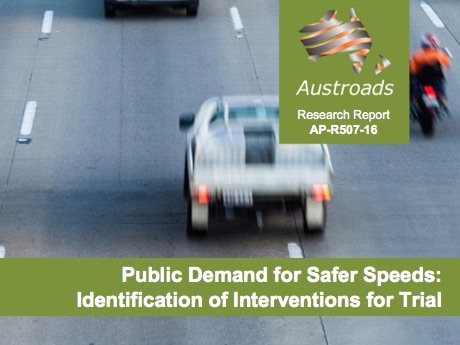Austroads has published a major study into speeding which presumes that the public wants “safer speeds” that are lower speeds.
The whole premise for the 161-page report seems to be that lower vehicle speeds means less risk.
It recommends a wide range of campaign strategies including reducing speed limits, more signs showing your current speed, education campaigns and even changing the language of road safety messages such as referring to accidents as crashes.
This change in terminology also reflects an experiment in Victoria to temporarily change the name of the town Speed to Speedkills.
“Changing community perceptions about speeding is an important priority,” the study says.
It claims the community wants safer speeds, but some parts of the community, such as motorcycle riders are “not yet” convinced.
That’s about the only specific reference to motorcyclists except to say that local jurisdictions may need to focus on riders.
But what they are really saying is that riders need to be slowed and they need to be convinced to slow down.
The Austroads study started with reviews of other studies, then engaged “key stakeholders” about intervention options, then provided this final assessment and list of recommendations to slow vehicle speeds.
It’s a lengthy study, but here are some excerpts that you may find interesting:
Create demand for safer speeds
1. To enhance community understanding of risk associated with speeding.
2. To enhance community understanding that increased speeds result in increased crash severity, based on uncontested laws of physics.
3. To increase awareness of purpose and benefits of speed enforcement.
Increase demand for safer speeds
4. To challenge the prevailing descriptive norm that ‘everyone speeds’.
5. To challenge the injunctive/moral norm that speeding is acceptable and approved of by others (i.e., that speeding is no big deal).
6. To challenge the perception that speeding saves a large amount of time, and/or that it is possible to make up a large amount of lost time by speeding.
Sustain demand for safer speeds
7. To challenge the perception that complying with speed limits is hard/impossible and to promote individual responsibility for and ability to choose and control one’s speed.
8. To continue to build a positive culture surrounding road safety more broadly, and speeding more specifically.
9. To challenge language associated with speeding in order to alter public perception of its importance.
There is no mention about how lower speed limits and increased enforcement creates unsafe motorists who are more intent on watching their speedos than watching the traffic around them.



